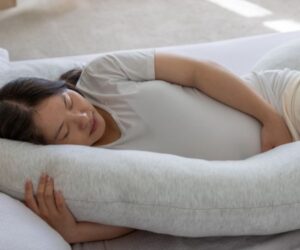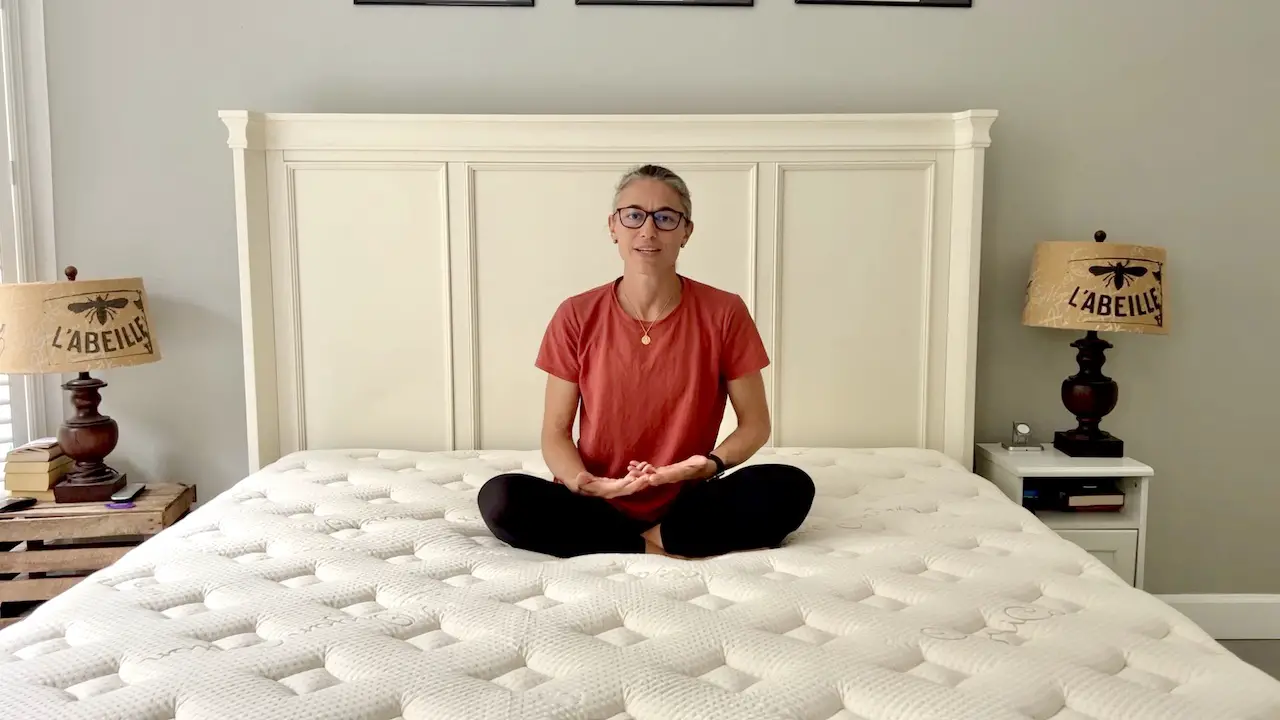SLEEP DIVORCE
What It Is, Why People Do It, and How to Make It Work
In recent years, the term “sleep divorce” has gained attention as more couples rethink traditional sleeping arrangements. Despite the name, sleep divorce is not about ending a marriage or relationship — instead, it refers to partners sleeping in separate beds or rooms to improve their quality of rest.
For many, this choice is not about emotional distance, but about eliminating the sleep disruptions that can arise from sharing a bed. From loud snoring and differing schedules to temperature preferences and restless movements, there are countless reasons why couples consider a sleep divorce.
This article explores what sleep divorce really means, why it works for some couples, the pros and cons, and how to approach it in a way that strengthens rather than harms your relationship.
Table of Contents
What Is Sleep Divorce?
A sleep divorce is when romantic partners decide to sleep apart—whether in separate beds in the same room, separate rooms entirely, or even on different floors of the home.
Rather than symbolizing the breakdown of intimacy, a sleep divorce is often an intentional choice to protect sleep quality. Since poor sleep has been linked to mood swings, health issues, and even relationship tension, prioritizing rest can be a surprisingly loving decision.
Why Are More Couples Choosing Sleep Divorce?
Several factors have contributed to the rise of sleep divorce in recent years, including:
1. Increased Awareness of Sleep Health
In today’s wellness-conscious culture, more people recognize that adequate rest is crucial for mental and physical well-being. Chronic sleep deprivation often lead to higher stress levels, reduced focus, weakened immunity, and a higher risk of long-term health problems.
2. Common Sleep Disruptors
Many couples face nightly challenges such as:
Snoring: One of the top causes of sleep disturbance in relationships. If you or your partner snore, see if an adjustable base is a solution for you!
Different Sleep Schedules: Early birds vs. night owls often struggle to align bedtime routines. If you are shift worker, this guide is for you!
Temperature Preferences: One partner may love a cooler room while the other prefers warmth.
Restless Movement: Tossing, turning, or kicking can wake the other partner.
Use of Technology in Bed: Scrolling on phones or watching TV can keep the other awake.
3. Changing Cultural Attitudes
Sleeping in separate rooms was once stigmatized, but growing discussions around sleep divorce have re-framed it as a practical solution rather than a relationship red flag.
The Benefits of Sleep Divorce
Choosing a sleep divorce can be surprisingly positive for both partners when done thoughtfully. Let’s look at some of the benefits you can expect from sleep divorce:
Improved Sleep Quality
Without disruptions from a partner’s snoring, movements, or late-night habits, each person can fall asleep faster and stay asleep longer.
Better Mood and Energy Levels
Quality sleep improves mood, patience, and emotional resilience—helping couples communicate more effectively.
Reduced Relationship Tension
Many couples report fewer arguments after implementing a sleep divorce, since sleep deprivation often fuels irritability.
Personalized Sleep Environments
When sleeping separately, each partner can choose their own mattress, bedding, temperature, and lighting preferences without compromise.
The Drawbacks of Sleep Divorce
While there are benefits, a sleep divorce may also bring challenges.
Potential for Emotional Distance
Without nightly closeness, couples may feel disconnected unless they make intentional efforts to bond, especially if the sleep divorce comes after many years of co-sleeping.
Social Misunderstandings
Friends and family may misinterpret the arrangement as a sign of relationship trouble.
Loss of Spontaneous Intimacy
Physical intimacy may require more planning when couples sleep apart. Though keep in mind that intentional intimacy can make things more exciting.
How to Know if Sleep Divorce Is Right for You
Deciding whether to try a sleep divorce requires honest self-assessment and open communication with your partner.
Signs it might help:
You frequently wake up tired despite enough hours in bed.
You feel irritated with your partner due to sleep disruptions.
Your health or work performance is affected by poor sleep.
Previous attempts to solve the issue (white noise, earplugs, schedule changes) have failed.
Signs it may not be the right move:
You are already feeling emotionally distant.
You prefer physical closeness at night for comfort or security.
You are concerned about how it may be perceived in your cultural or family context.
Myths About Sleep Divorce
There are several misconceptions about sleep divorce that can cause unnecessary worry.
Myth 1: Sleep Divorce Means Relationship Problems
In reality, many happy couples choose this arrangement to protect their health and strengthen their bond.
Myth 2: It’s a Permanent Decision
A sleep divorce can be temporary—some couples use it during stressful work periods, illness, or after having a newborn.
Myth 3: It Kills Intimacy
Physical closeness can still thrive when couples prioritize cuddling, date nights, and morning time together. Intention becomes are entire part of intimacy, which can actually deepen the relationship between partners.
How to Make Sleep Divorce Work for Your Relationship
1. Communicate Openly
Discuss your reasons without blame. Frame it as a solution for better sleep and better quality time together.
2. Set Clear Expectations
Agree on when and how you’ll spend time together before bed or in the morning.
3. Keep a Connection Ritual
Maintain a habit like a nightly conversation, shared morning coffee, or weekend sleep-ins together. Find what works for you and make it a priority.
4. Reassess Regularly
Check in every few weeks to ensure the arrangement is working for both partners.
Alternatives to Sleep Divorce
If you’re hesitant about a full sleep divorce, consider these middle-ground solutions:
Bigger Bed: Upgrade to a King or California King mattress to reduce disturbances.
Split Mattress: Choose an adjustable bed or split mattresses (2 Twin XL = King) so each partner has their own firmness and motion control. This will immediately improve the sleep of someone with partner who tosses and turns a lot at night.
White Noise Machines: Mask snoring and environmental noise effortlessly with an inexpensive white noise machine.
Sleep Apnea Treatment: Seek medical help if snoring is severe. For milder cases, some OTC solutions exist and an adjustable bed can be of great help.
Separate Bedding: Use individual blankets to avoid tug-of-war.
The Role of Bedding and Mattresses in Sleep Divorce
For couples debating sleep divorce, bedding and mattress choices can make a big difference. A motion-isolating mattress reduces the impact of tossing and turning, while cooling bedding helps resolve temperature disagreements.
Recommended options for better shared sleep:
Hybrid Mattresses: Combine support and motion isolation.
Adjustable Beds: Let each partner control their own incline when using a split base and mattresses.
Dual-Zone Climate Control: Keeps one side warmer and the other cooler with a dual-sided cooling device.
Weighted Blankets: Reduce restlessness for one partner without affecting the other. Check out our list of Best Weighted Blankets.
The Psychological Impact of Sleep Divorce
Studies show that couples sleeping apart often report higher individual sleep satisfaction and overall mood. However, emotional closeness requires intentional maintenance. Scheduling cuddling time, date nights, or even occasional shared nights can help preserve intimacy.
Sleep Divorce in Different Life Stages
Newlyweds
New couples may hesitate to try a sleep divorce, but setting boundaries early can prevent resentment and help normalize sleeping apart within a marriage.
Parents of Young Children
Sleep schedules are already disrupted by kids—separate sleeping arrangements can help parents get more rest by allowing each parent for undisrupted nights of sleep.
Older Couples
Health concerns such as chronic pain, insomnia, or sleep apnea can make sleep divorce a practical necessity.
Sleep Divorce as a Tool for Better Rest
While the name may sound dramatic, sleep divorce can be a healthy choice for couples who value both rest and their relationship. By approaching it with open communication, empathy, and a focus on maintaining emotional intimacy, sleeping apart can actually bring you closer together—while also giving you the deep, restorative sleep you need.
References
- University of Michigan – Psychology. (2024). Should Couples Normalize Sleeping in Separate Beds?Retrieved from https://lsa.umich.edu/psych/news-events/all-news/faculty-news/should-couples-normalize-sleeping-in-separate-beds-.html
- The Michigan Daily. (2023). The future of happy couples: Sleeping in separate bedrooms. Retrieved from https://www.michigandaily.com/opinion/the-future-of-happy-couples-sleeping-in-separate-bedrooms/
- AARP. (2023). Will Sleeping in Separate Bedrooms Heal Your Marriage — or Kill It. Retrieved from https://www.aarp.org/family-relationships/couples-who-sleep-in-separate-bedrooms/
FAQ
Most frequent questions and answers
Sleep divorce is when couples choose to sleep in separate beds or rooms to improve sleep quality.
No, many couples use it to protect rest and reduce tension.
Yes, it can be a short-term solution during stressful or disruptive periods.
Schedule cuddling, morning coffee, or date nights to maintain connection.
Yes, sleeping apart can prevent disruptions from snoring.
What’s the main difference between cotton and organic cotton?
Organic cotton is grown without harmful chemicals or GMOs, making it more eco-friendly and skin-safe.
Is organic cotton better for sensitive skin?
Yes, it’s hypoallergenic and free from irritants, ideal for people with allergies or skin conditions.
Does organic cotton last longer than regular cotton?
High-quality organic cotton often lasts longer because it’s less processed and more durable.
Is organic cotton more breathable?
Yes, it naturally allows better airflow, making it great for hot sleepers.
Why is organic cotton more expensive?
It costs more to grow and produce organically, but offers better quality and sustainability.
Share this deal with a friend!

Laura Georgieff
Laura is a mother of three who did not sleep through the night for the first 5.5 years of her kids' lives. She is passionate about sleep quality and loves sharing her experience and knowledge of all thing bedding! It is her mission to help you make the best decisions when it comes to sleep and help you get the best deal on the market!






